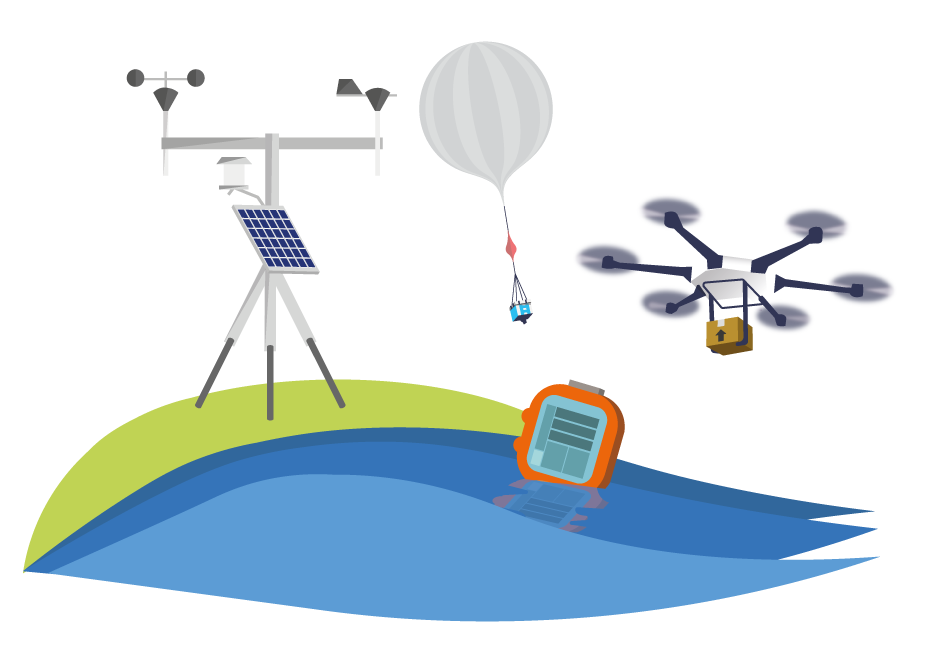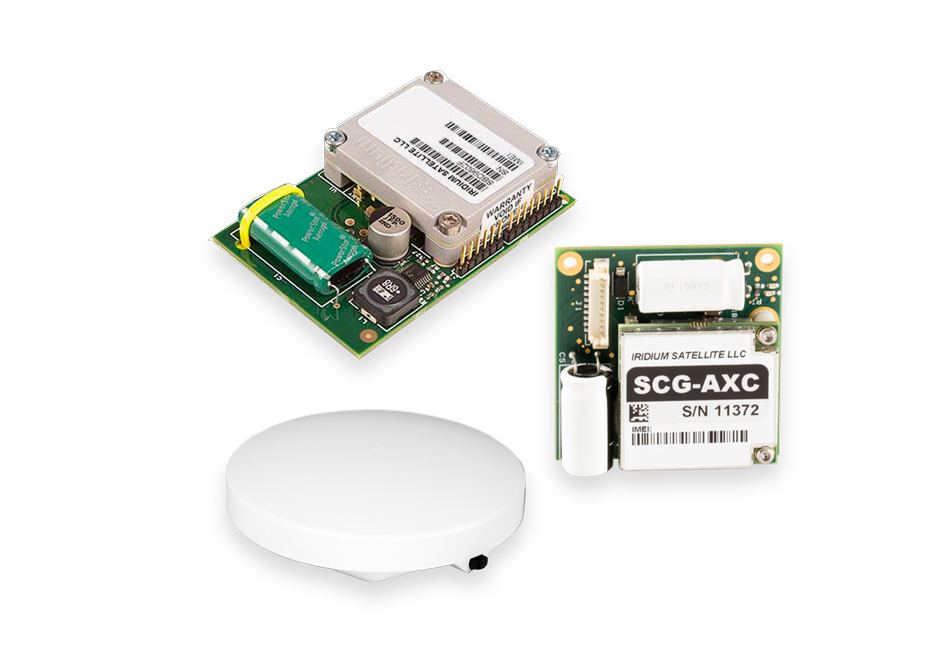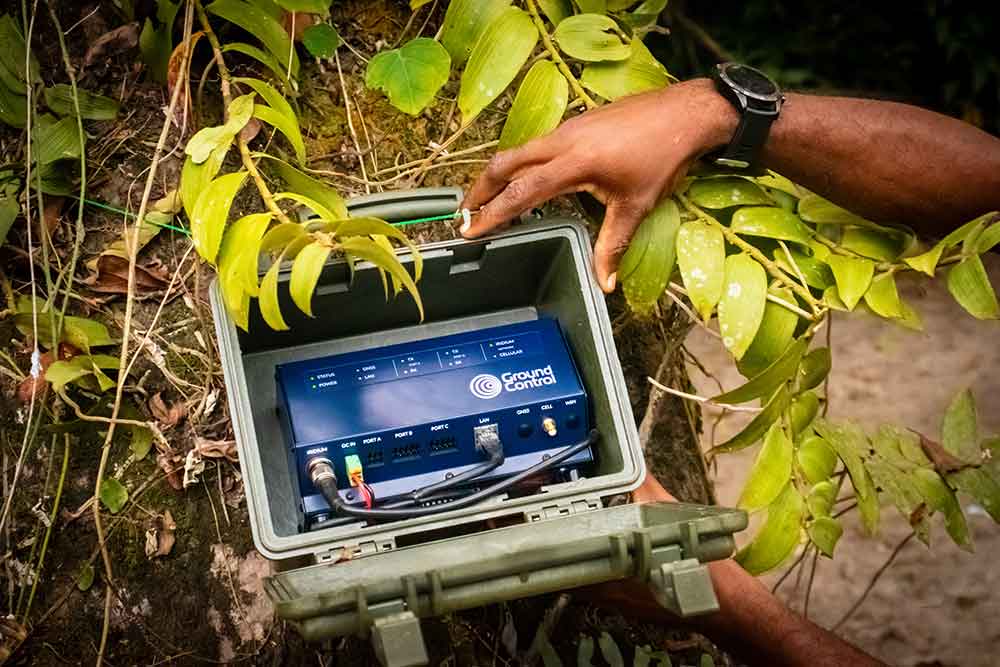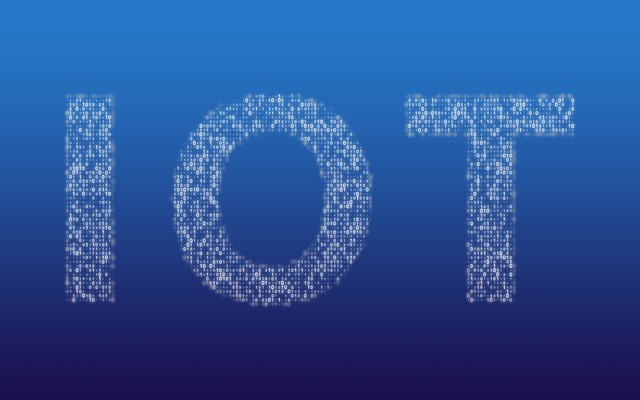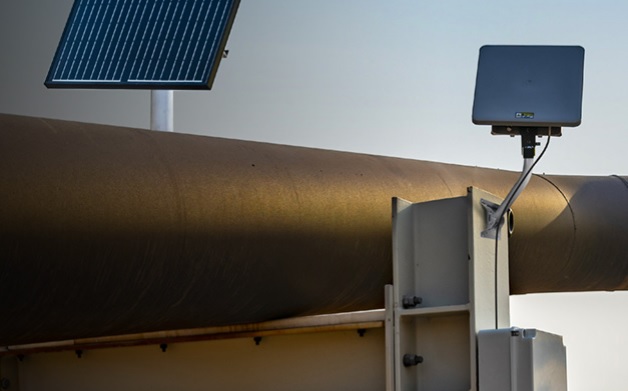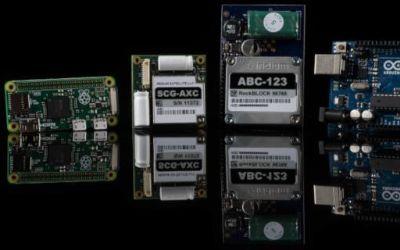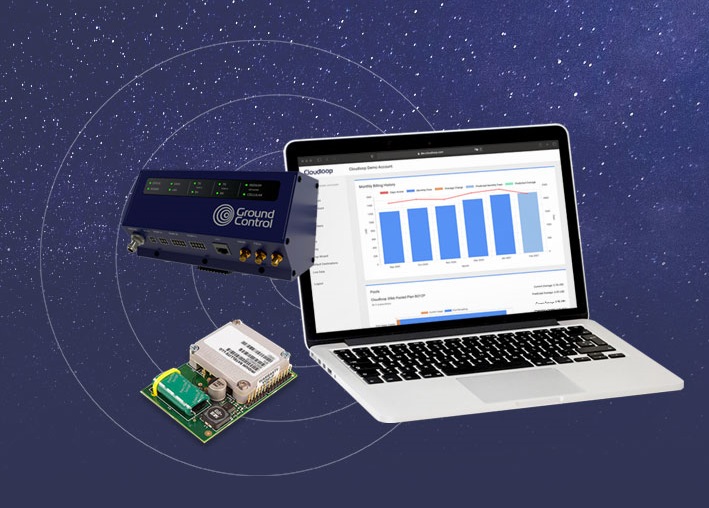The Internet of Things (IoT) has already transformed industry with access to unprecedented levels of connectivity, data collection, and analysis. By enabling devices to connect and communicate with each other, IoT has facilitated smarter, faster business decisions across almost every sector. A reported 77% of surveyed companies had deployed at least one IoT project in 2021, and the remaining 23% were said to either be trialling a project or planned to within the next two years.
The benefits of IoT projects can be grouped into three categories: Operational Efficiency (improving business processes), Customer Experience (enhancing customer relationships), and Growth Opportunities (new revenue streams). Consulting firm McKinsey estimated IoT could enable $5.5 to $12.6 trillion of value globally by 2030. But 75% of businesses reported struggling with connectivity issues when trialling IoT projects, and 91% believe that satellite connectivity is key to improving the effectiveness of IoT solutions.
What is satellite IoT?
IoT describes a system of interconnected devices, which are also connected to the internet. Satellite IoT describes the systems and networks, or assets within a network, which are connected via satellite. This can include a variety of devices such as sensors, trackers, and other smart devices, often located in remote or hard-to-reach areas where cellular coverage is not available or reliable, and where it wouldn’t make financial sense to build the appropriate infrastructure to support e.g. fibre connectivity.
Satellite-enabled devices collect data which is then transmitted to a satellite within the chosen network. The satellite relays the data to a ground station, from where it is sent to the application endpoint for processing and analysis. This enables real-time monitoring and control of devices and applications, even in remote locations, making it an ideal solution for industries such as oil and gas, agriculture, energy, and others.
Different types of Satellite IoT
There are three types of satellite networks used to support IoT connectivity: Low Earth Orbit (LEO), Medium Earth Orbit (MEO), and Geostationary (GEO).
For a more detailed overview on how satellite orbit heights impact satellite communication, please visit our satellite orbit height guide.
Categorised by satellite orbit height from the Earth’s surface, Low Earth Orbit (LEO) is the closest at 160 – 2,000km (99 – 1243 miles), followed by Medium Earth Orbit (MEO) which is relatively rare, with only 10% of satellites orbiting between 10,000-20,000 km from the Earth’s surface. The furthest orbit is Geostationary Orbit at 35,786 km (22,236 miles).
Satellite networks also differ based on deployment location and ground coverage area. This, to a degree, lends them to particular IoT use cases. For instance, cross-linked LEO satellite constellations offer low latency and global coverage, making them ideal for mobile applications like asset tracking. MEO satellites, with broader coverage areas, are used for global navigation and timing services. GEO satellites offer a stable, reliable connection that’s ideal for higher data rates in static use cases such as oil and gas pipeline monitoring.
Understanding the different types of satellite networks is key to choosing the right solution for your IoT use case.
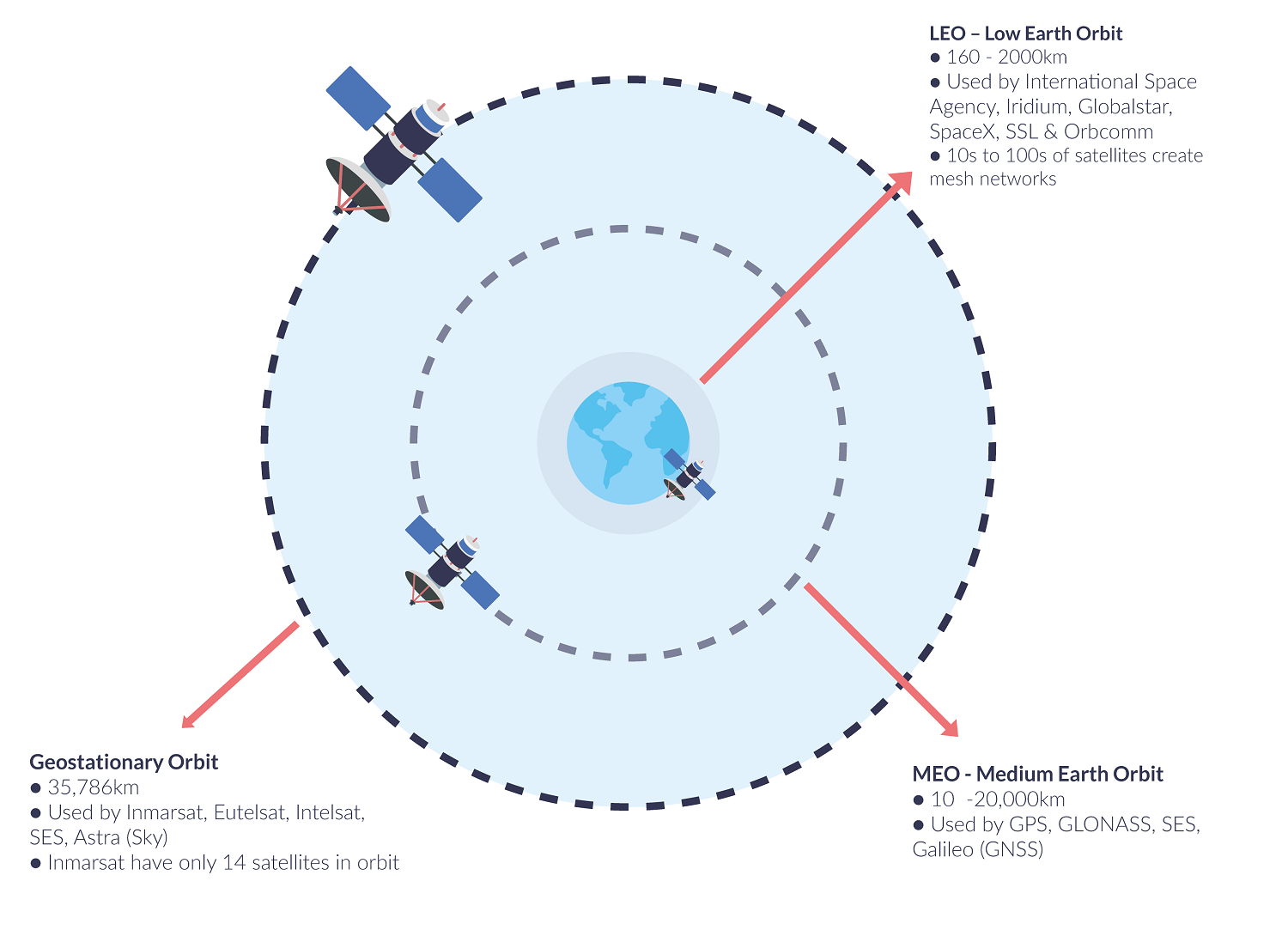
LEO Satellite connectivity
Satellites in LEO orbit closest to the Earth and move quickly, taking just 90 minutes to circle the planet. These satellites are much smaller than their MEO and GEO counterparts and because of their proximity to the Earth, each satellite provides coverage to a relatively small area of the planet’s surface as it travels overhead. There are three commonly used ways to maximise coverage for satellites in LEO.
Some satellite operators – notably Iridium – create a mesh network to facilitate reliable connectivity. Satellites within a mesh network are able to communicate with one another, passing data from one satellite to another until the final destination is reached. Antennas communicating with a mesh network don’t need to be ‘pointed’ towards a single satellite, as data can be picked up by any satellite within the constellation and passed through the mesh network, to the ground station. This makes these networks ideal for mobile IoT applications, such as weather balloons or data buoys.
Another option is to have fewer satellites but more ground stations, so there are more places on Earth that can receive the data from the orbiting satellites. This allows for more bespoke local service provisions such as local network access, and is used by Globalstar and Orbcomm.
Newer entrant satellite operators have opted for a relatively large number of very small satellites (called cubesats); the sheer quantity of satellites means there’s almost always one overhead, so antennas don’t need to be pointed.
LEO satellite networks are well-suited for environmental and asset monitoring applications sending small data packets. The low-cost setup usually requires just one IoT device per modem, and service reliability is very high.
What about cubesats?
Cubesats – a form of nanosatellite – also operate in LEO. These miniature satellites are made up of standardised ‘units’ – 1U, 2U etc. indicates the size. They were initially developed for educational and technology demonstration purposes, but have now become a popular choice for a wide range of space missions, including Earth observation, communication, and scientific research.
Due to their small size and low cost, cubesats can be relatively inexpensively used to build constellations of satellites for various applications, including satellite IoT connectivity. However, their small size leads to a shorter operational life expectancy, so operators need large numbers of active and failover cubesats to ensure wide-spread and reliable coverage.
MEO Satellites
MEO satellites orbit the Earth at a higher altitude than LEO satellites, typically between 2,000 and 36,000 kilometres. As MEO satellites are comparatively larger than LEO satellites, they can cover larger areas of the globe’s surface and provide more stable connectivity. As such MEO satellites are commonly used in maritime and aviation applications, where constant connectivity is essential for safety and communication.
In addition, MEO satellites can facilitate higher data rates, making them ideal for IoT applications that require large amounts of data to be transmitted quickly, for example, video surveillance and remote sensing.
However, due to the higher altitude MEO satellites have a longer round-trip time, which can result in higher latency. Additionally, MEO satellites are more expensive to launch and maintain than LEO satellites, which can make them less accessible for smaller IoT applications.
Network operators include SES and Galileo.
Geostationary Satellites
Geostationary satellite connectivity for IoT applications involves the use of satellites positioned in a fixed spot above the earth’s equator, around 36,000 km away from the surface. This type of connectivity is suitable for applications that require high bandwidth and consistent signal coverage, such as video streaming, remote surgery, and aviation communications.
One advantage of geostationary satellite connectivity is its wide coverage area, with each satellite able to ‘see’ almost a third of the earth’s surface. This makes it ideal for providing connectivity in remote or hard-to-reach areas. Additionally, because the satellite is stationary, it can provide a constant link between the IoT device and the ground station.
However, the high altitude of geostationary satellites results in latency of about 700 milliseconds (compared to 50 milliseconds for LEO satellites), which can affect certain applications that require real-time responses. Also, because there are only a limited number of geostationary orbital slots available, the cost of launching a new satellite and securing a slot can be prohibitively expensive.
Despite these limitations, geostationary satellite connectivity remains a valuable option for IoT applications that require high bandwidth and wide coverage.
Network operators include: Viasat, Intelsat and Eutelsat.
Choosing the right type of satellite IoT
When it comes to choosing the right type of satellite IoT, there are many factors to consider. At Ground Control, we tend to take our customers through the following questions to help them narrow down their options:
- How data intensive is your application?
- How time-critical is receipt of your data?
- Where are your assets located?
- Are your assets fixed or mobile?
- What level of data security is required?
Though that isn’t a comprehensive list, it should be enough to guide some initial investigations.
We understand that navigating the world of satellite IoT can be daunting, which is why our team of experts is always on hand to answer your questions and help you choose the right solution for your business. Contact us today at hello@groundcontrol.com to learn more about how we can help you connect anywhere in the world.
Looking for a satellite connectivity partner?
So if you are working on an IoT project and would like some no pressure, objective advice, simply fill in the form and one of our expert team will get back to you.
